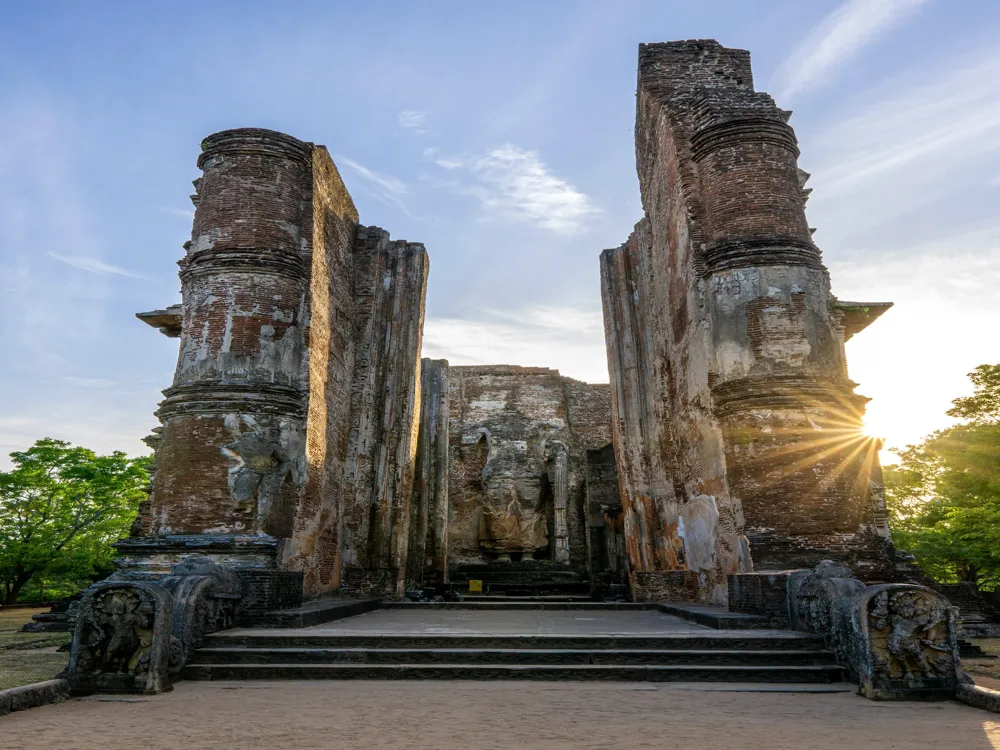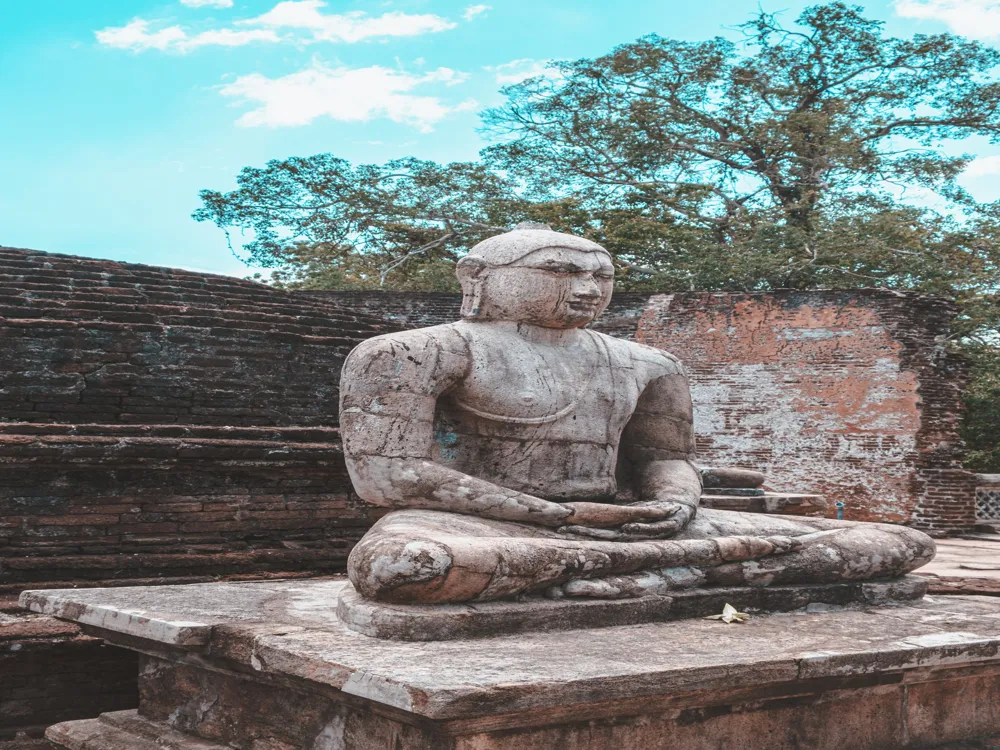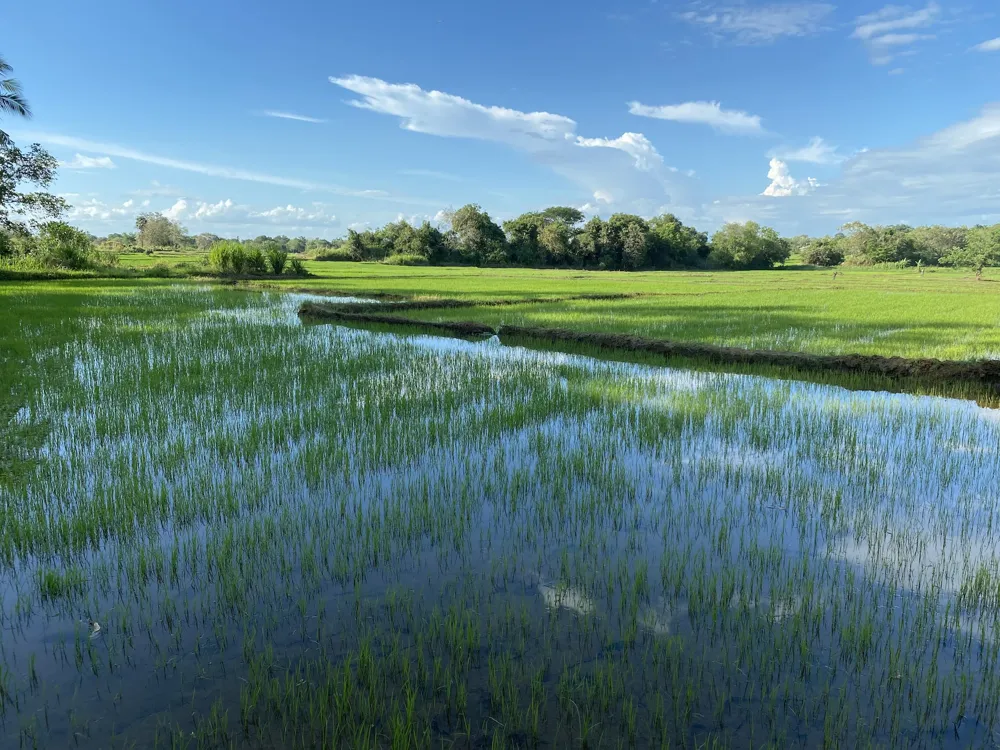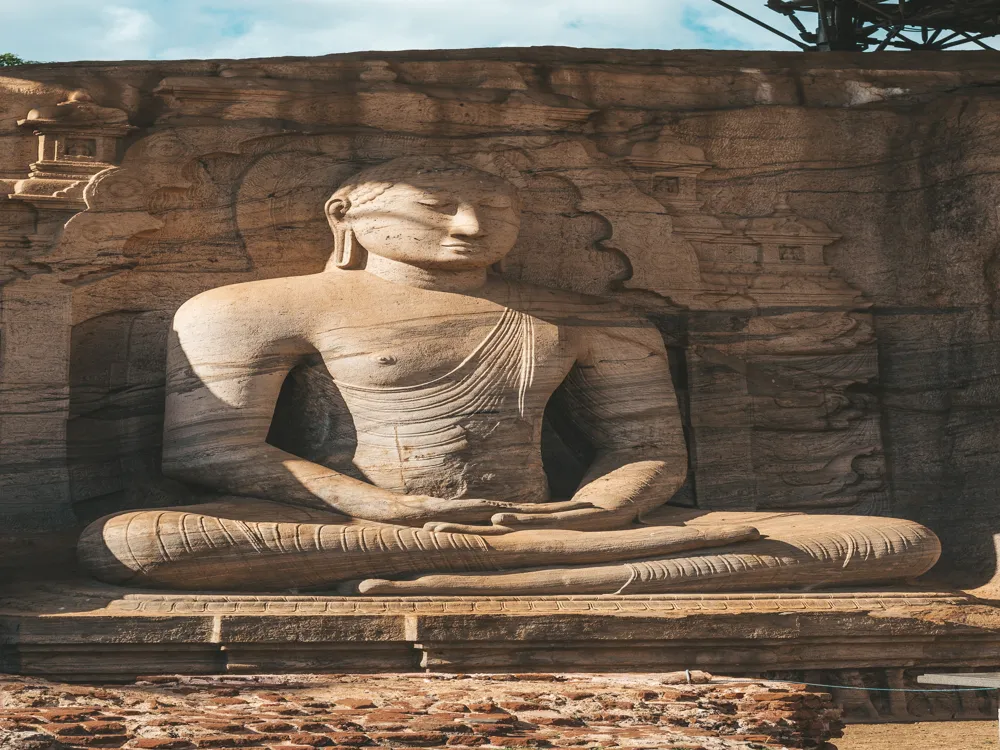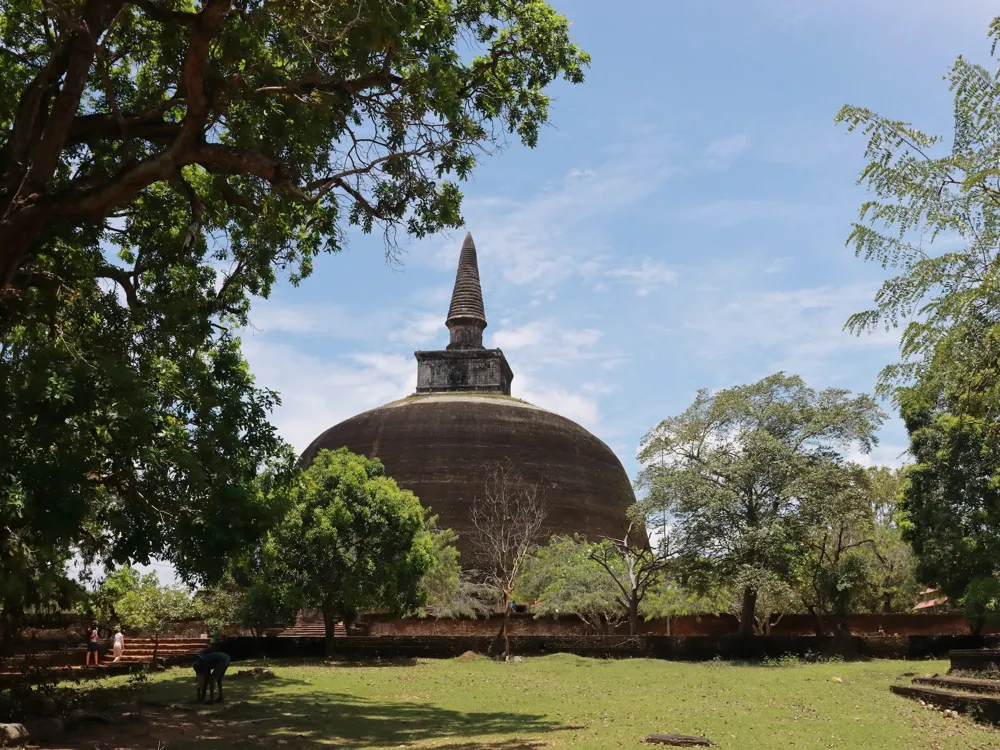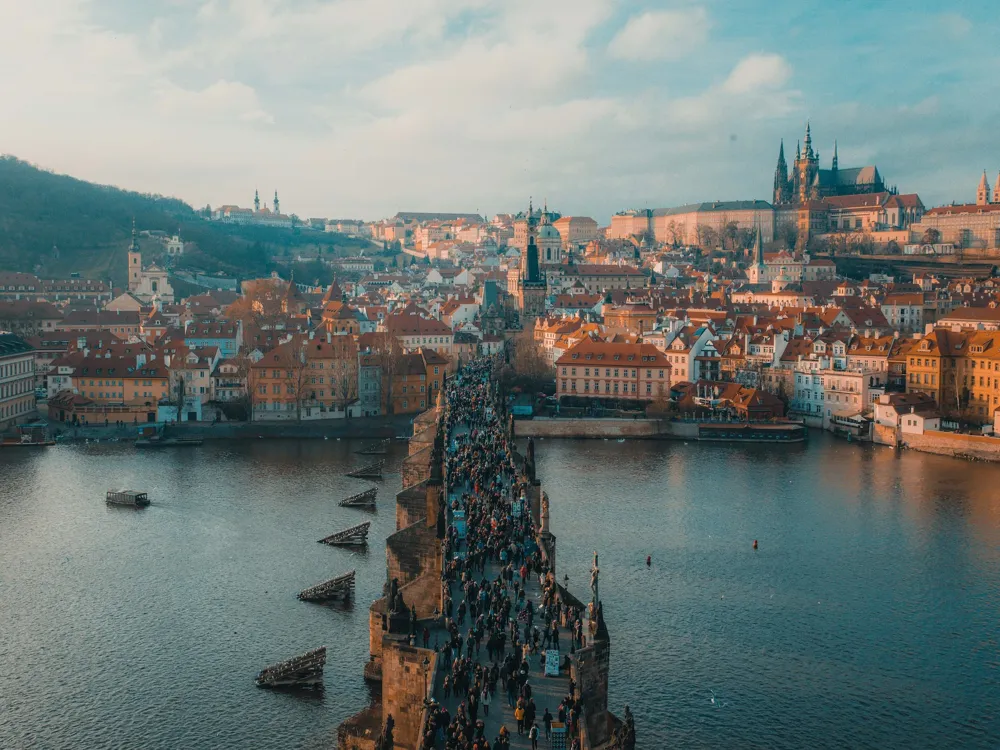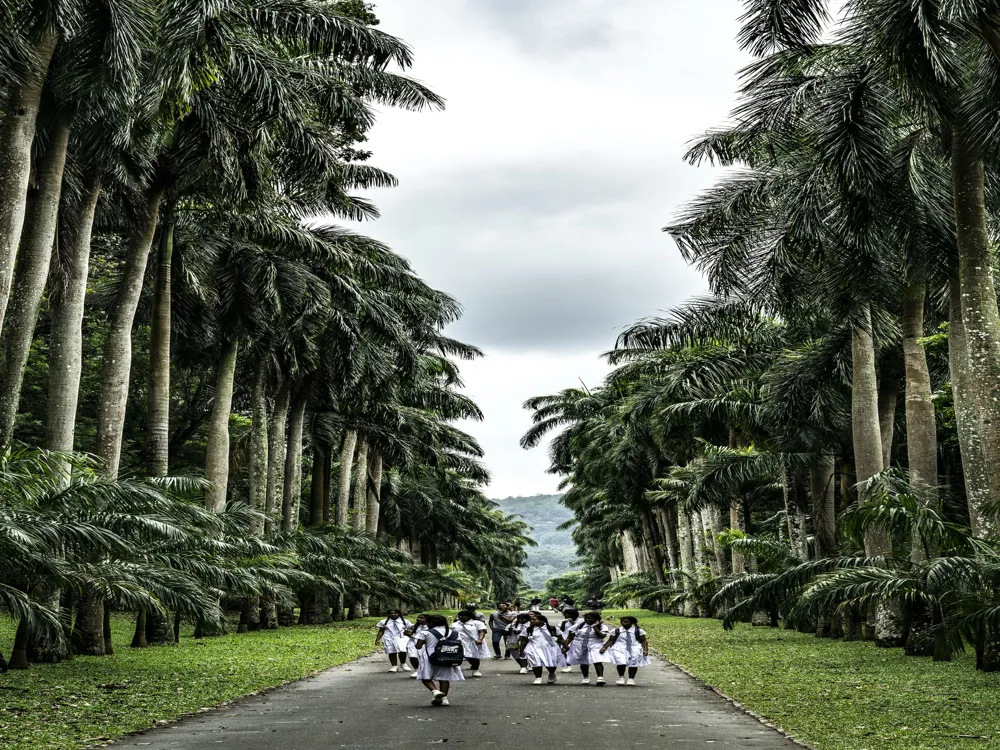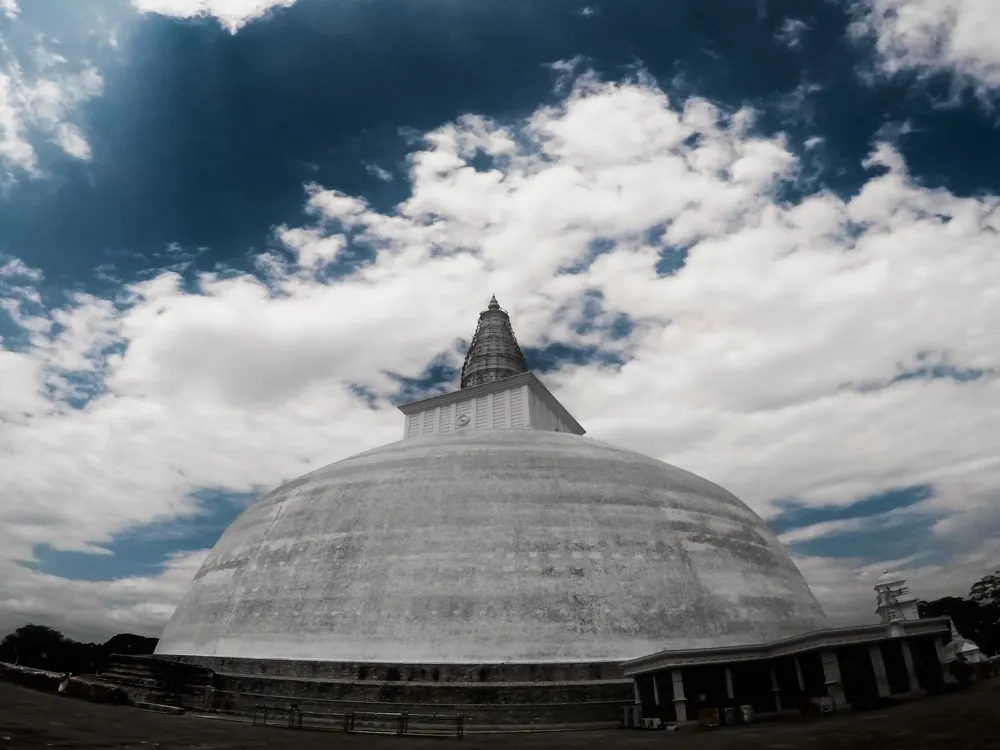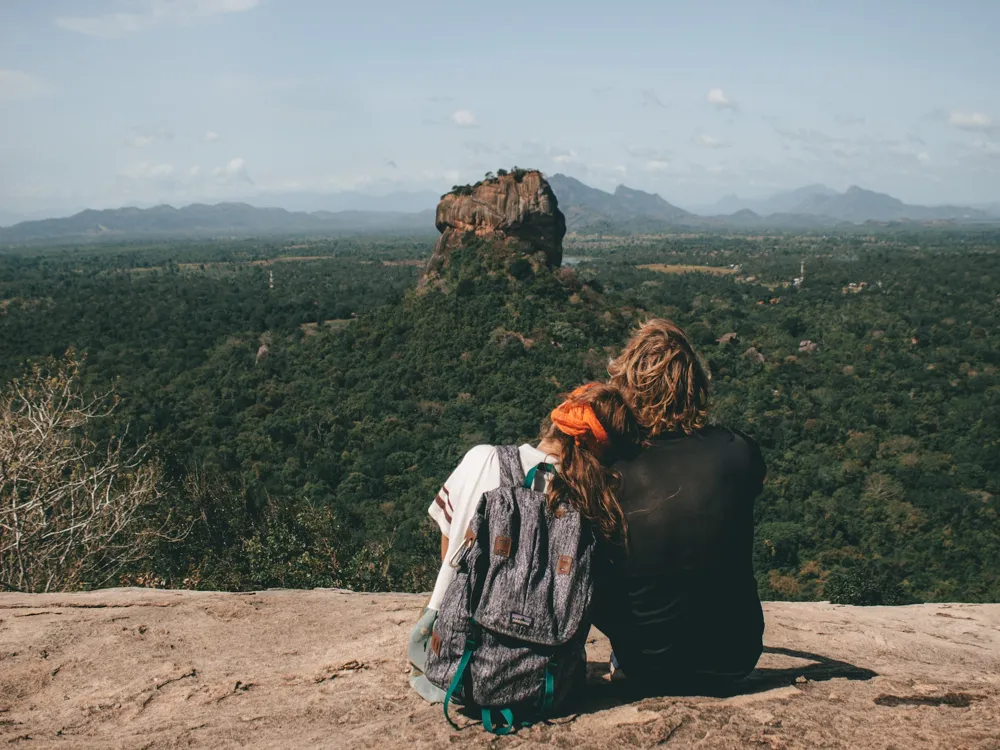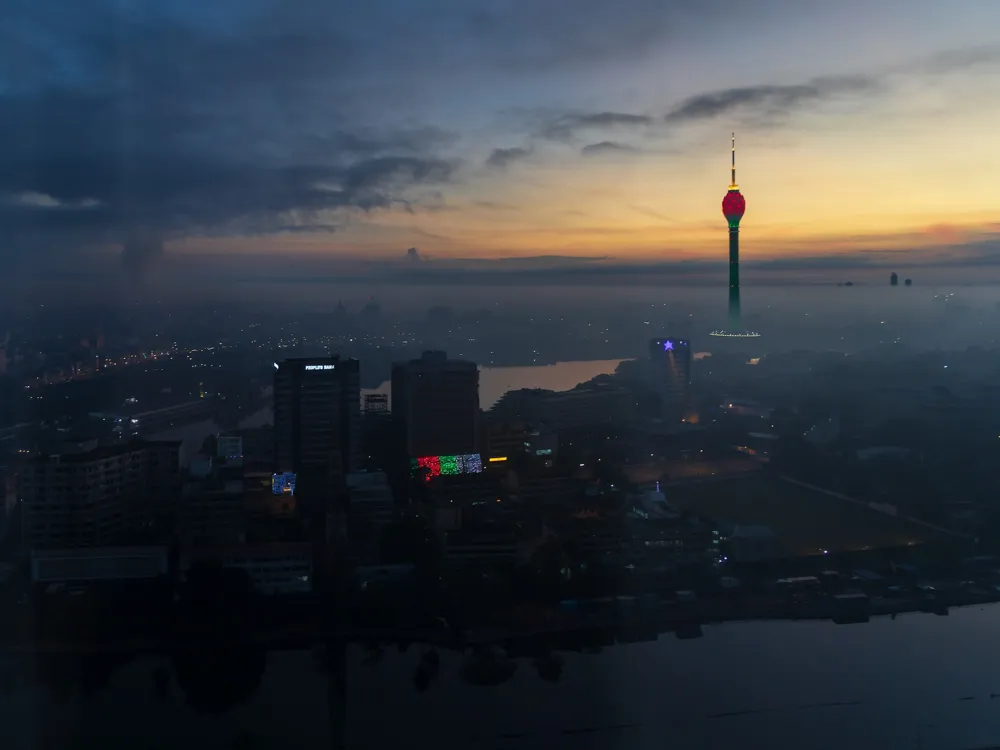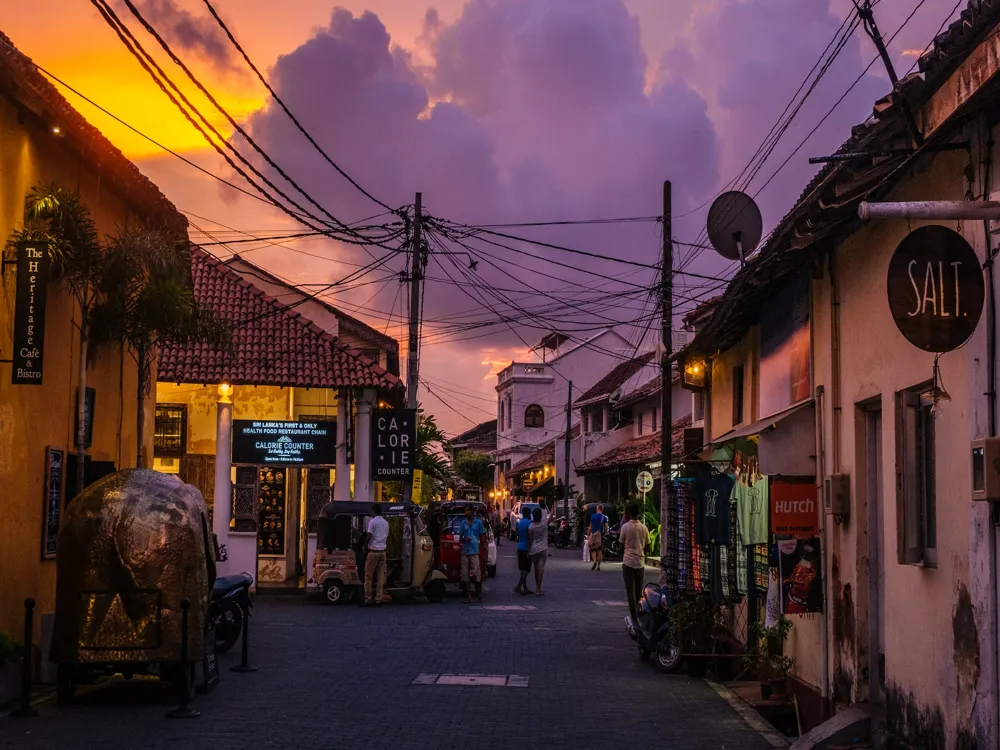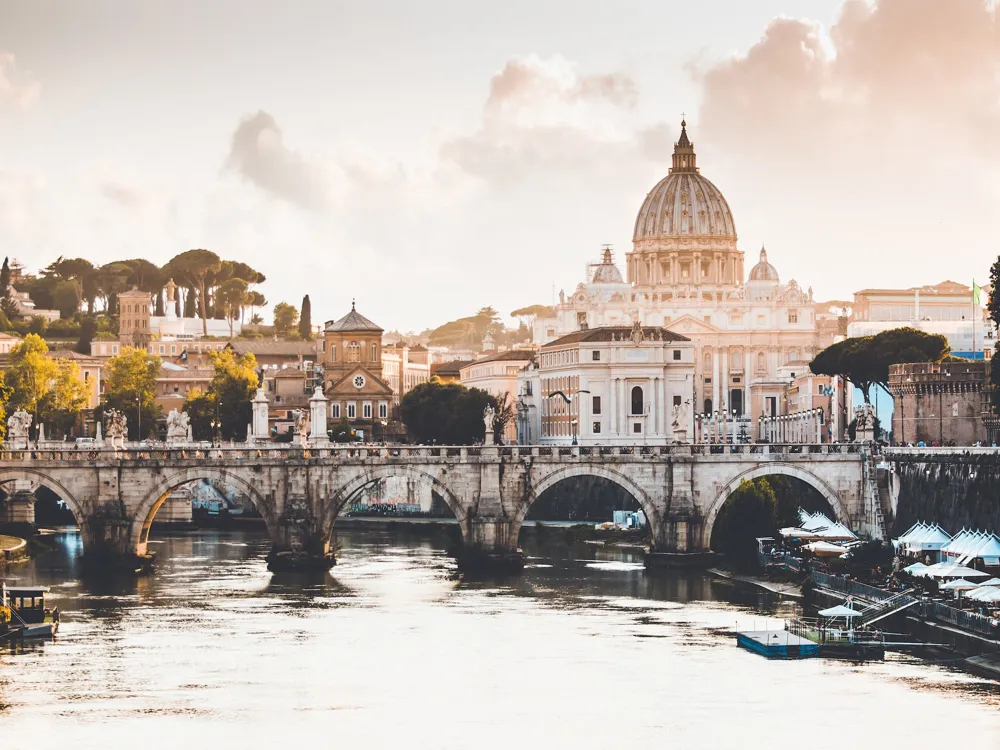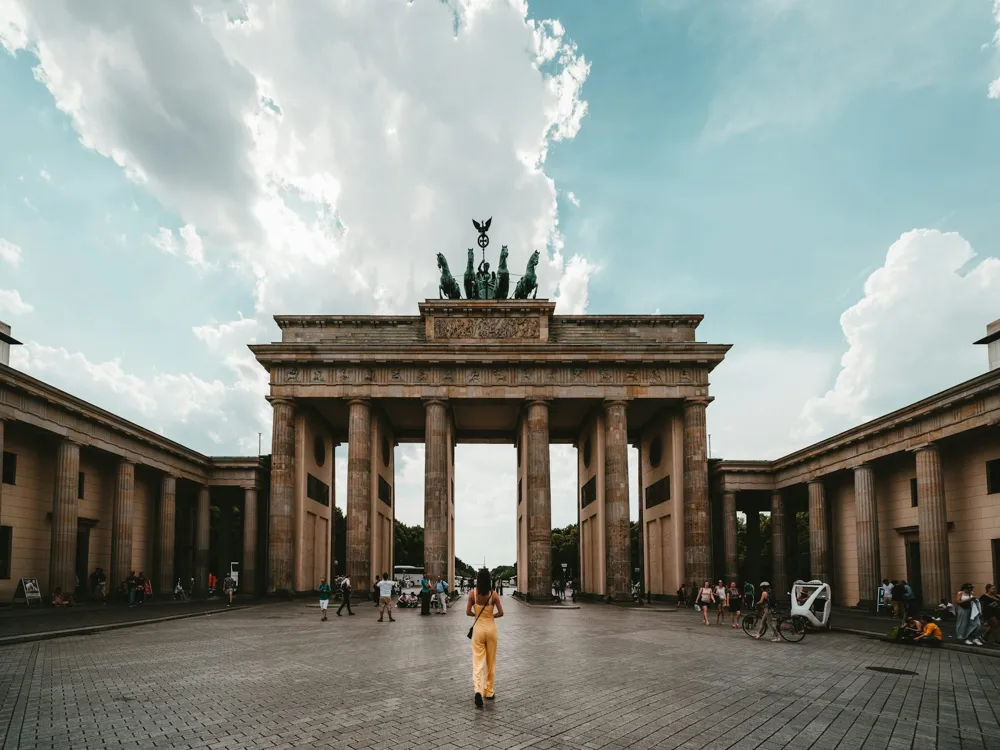Plan Your Travel To Polonnaruwa
Places To Visit In Polonnaruwa
Angammedilla National Park
About half an hour away from the historical city of Polonnaruwa, bordered by the Angammedilla Canal in the south, lies Angammedilla National Park. A relatively more recent addition to Sri Lanka’s long list of protected areas, Angammedilla National Park is a habitat for a wide variety of flora and fauna. The park was initially designated to protect the catchment areas of the Parakrama Samudra, a shallow reservoir in Polonnaruwa, and the Minneriya and Girithale irrigation tanks.
Home to several Sri Lankan elephants, Angammedilla National Park, is a part of the country’s famous elephant corridor along with Minneriya, Kaudulla and Wasgamuwa National Parks. The wildlife at Angammedilla also includes wild boars, barking deer, purple-faced leaf monkey and water buffaloes. The serene atmosphere makes the park a joy for camping; visitors can also stay at a spacious bungalow administered by the Department of Wildlife Conservation that can accommodate ten people. A unique attraction at the park is the Angammedilla Gal Amuna, a stone weir built during the reign of King Parakramabahu I in the 12th century.All in all, a visit to Angammedilla National Park is undoubtedly a must for a taste of Sri Lanka’s national parks that are off the beaten track.
Read More
Archaeological Museum, Polonnaruwa
Polonnaruwa is an ancient city, which constitutes, apart from the natural ruined sites ,one of UNESCO's World Heritage Site. The city has rooms full of excavated artefacts, which form the archaeological museum of Polonnaruwa. The museum was established in the Public Services Sports Club Hall at Polonnaruwa in 1962 and depicted scenes from 1012 A.D. During this period, the region was ruled by the Chola dynasty, which had some of the mightiest rulers. One of the most diligent rulers was King Parakramabahu I, who selflessly supervised the construction of Polonnaruwa. The museum looks like a small, simple hut from outside, but consists of a variety of informative visuals and artefacts on the inside.
The museum aims to develop and provide knowledge to the community by following methods of conservations and reservations, showcases several statues of Indian Gods, especially bronze statues of Lord Shiva and Gautam Buddha. The archaeological museum, with all its history, heritage and honour, is the first destination in most Polonnaruwa tours. It is the entry point to the city and well deserves so. The replica of ancient monuments and buildings stimulates the imagination of informs the tourists of the royal past of the site. Usually, travellers begin their Polonnaruwa tour from this site. Doing so briefs them about where they have landed - the history and heritage of the city, which lies at 200 km from the capital city, Colombo.
Read More
Dalada Maluva, Polonnaruwa
The circular building of Dalada Maluwa, also known as Terrace of the Tooth Relic of Lord Buddha, is a beautiful work of art and architecture of the 12th century. Dalada Maluwa was built by King Parakrambahu the great (1164-1196AD), it was later enhanced and decorated by King Nissankamalla (1198-1206). It was the intended house for the Sacred Tooth Relic of Buddha; however, presently, the Tooth Relic is deposited in Kandy Tooth Relic Temple.
As the capital of the Kandyan kingdom, Kandy which is 3 hours away from Dalada Maluva had become home to the relic of the tooth of Lord Buddha, and the protector of the relic was the ruler of the land. The Royal Palace and the Temple of the Tooth were thus placed near each other.The existing rock arts and moonstones are serene. Dalada Maluwa was an attraction for Buddhist Vihar in the glory days and stood as an epitome of a glorious history.An important festival and significant tourist attraction here is the Kandy Esala Perahera which is the procession from Dalada Maluwa to Kandy. Also known as The Festival of the Tooth, it is a grand event celebrated with embellished costumes. It is an annual procession held every year between July and August in honour of The sacred tooth relic of Lord Buddha.
Read More
Gal Vihara
Gal Vihara is a rock temple of Buddha which is in the north of Sri Lanka in the UNESCO World Heritage city of Polonnaruwa. It was initially known as Uttara Rama. It has four rock statues, each portraying different figures of Buddha. The first one is where Buddha is seated on a lotus; the second one is also a seated figure but smaller in size; the third one is a standing figure, and the last one is a reclining figure.
Parakramabahu is known to be its founder and completed the monument in the 12th century. There have been some controversies regarding the standing figure of Buddha with historians claiming that it is a figure of Ananda and not Buddha. The Gal Vihara is the most prominent of all hundred temples that were built throughout Sri Lanka by Parakramabahu. That three caves built here are namely Vijjadhara Guha (cave of the spirits of knowledge), the Nipanna Patima Guha (cave of the sleeping statue) and the Nissina Patima Lena (cave of the seated statue). The figures were considered painted with gold, but hunters melted and stole it. The code of conduct is stringent here, and one can't take a picture of Buddha with your back towards the idol.
Read More
Giritale Wewa, Polonnaruwa
Giritale Wewa or Giritale Tank is a reservoir in Giritale and Minneriya. Giritale Tank was one of the deepest tanks in Sri Lanka during the rule of ancient capital Polonnaruwa.
The Giritale Wewa Reservoir is not only a sightseeing venue in the area but also a historic location having a rich mythological history. The Sea of Parakrama built by Parakramabahu I is only a few kilometres away from the reservoir.
Kiri Vihara
Kiri Vihara is a dagoba or stupa in Kataragama region in the ancient city of Polonnaruwa, North Central Province, Sri Lanka. This an 80 feet tall, whitewashed, peaceful stupa is the second largest stupa in the town. Kiri Vihara was constructed in the 11th century AD, by King Parakramabahu's queen, Queen Subhadra. Its original name was Rupavathi Chaitya. Later the name was changed to Kiri Vihara, which means 'white stupa', which is because of its limewashed coating.
The stupa is within the Alahana complex, which is a well-known training centre for monks and also encompasses a hospital with the latest surgical instruments. The complex also consists of other smaller stupas built around Kiri Vihara which stupas are considered as burial chambers for honorary men and priests. Kiri Vihara is of straightforward and essential design and is yet an architectural marvel due to which it withstood natural disasters and thefts.Since this site is of utmost religious significance to the locals, tourists are expected to cover their shoulders and knees while visiting the ancient stupa. Clicking photographs with the back facing the statues of Lord Buddha is considered as a sign of disrespect, and is thus disallowed. Walking around this site wearing shoes is not permitted. Therefore, it is recommended that tourists wear socks because the land tends to become too hot to walk barefoot. Kiri Vihara is one of the most well preserved ancient stupas in the country. It is amidst extensive ruins, which adds to the grave beauty of the area. This stupa attracts those who are interested in history, culture and tradition, and leaves no one disappointed.
Read More
Lankatilaka Temple
The famous Lankatilaka temple of the Gampola period, attached with a rich history and incredible architecture, portrays the essence of Sri Lanka from the 14th century during the Gampola reign. It is located in Kandy near the Gadaladeniya Vihara Buddhist temple. Various rock inscriptions in Sinhalese and Tamil define the history of the land and the temple.
The Lankatilaka temple was built on Panhalgala rock, a natural rock, and had three sections - the Temple building (which has the Buddha Image house in the east and Temples of God in the west), the Stupa and the Bo tree. With a touch of Dravidian and Indo-Chinse style of architecture, this temple of Polonnaruwa era resembles temples of southern India.This Buddhist Temple, also known as Lankatilaka Viharaya, is situated in Udunuwara of Kandy in Sri Lanka and is one of the three famous Western temples. Located centrally among the two other temples, Embekke Temple is situated 4 KM south of it, and Gadaladeniya is 4 KM north of it. Lankatilaka means Lanka’s adornments or island’s ornament, belongs to the primary monastery of Polonnaruwa, which is now buried under history, unlike Lankatilaka Viharaya of Kandy.
Read More
Manampitiya Bridge, Polonnaruwa
Manampitiya Bridge is the second longest bridge in Sri Lanka. Before the Kinniya Bridge was declared open in 2009, it was the longest bridge in Sri Lanka. The bridge has a length of 302 metres. It comprises two decks, an early-twentieth-century steel bridge and newly built bridge.
The older bridge is used for railway purposes, and the new one carries two lanes of the highway. The steel bridge is 291 metres long and less than 5 metres in width. The most significant feature of this bridge is the railway track running right on the centre of the road. The bridge is operated by the Sri Lankan Army, and two Army checkpoints on both sides control both rail and motor vehicle traffic. The bridge is the only access point between Eastern Province and Central Province for about 80 kilometres of the Mahaweli river. The Mahaweli River is a 335-kilometre long river, ranking as the longest river in Sri Lanka. Its drainage basin is the largest in the country and covers almost one-fifth of the total area of the island.
Read More
Nissanka Latha Mandapaya
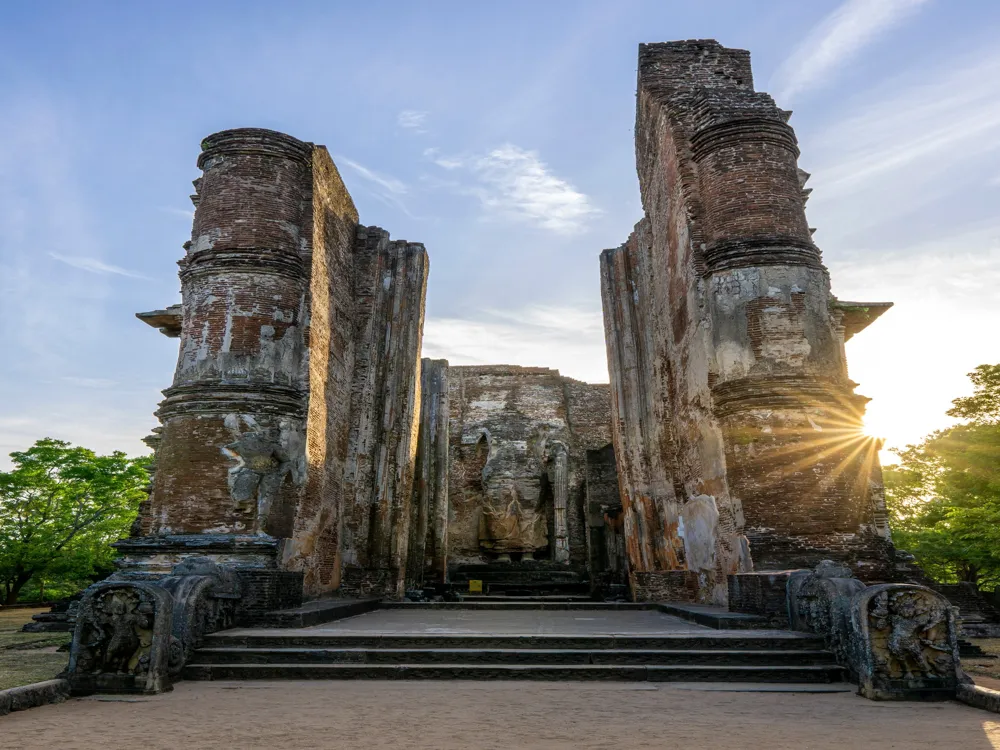
Nissanka Latha Mandapaya is a unique structure located in Sri Lanka. This architectural marvel is one of it's kind for many reasons. Nissanka Latha Mandapaya is a unique structure located in Dalada Maluwa quadrangle of Polonnaruwa district in North Central Province, Sri Lanka. This architectural marvel is one of it's kind for many reasons. King Nissanka Latha built Nissanka Latha Mandapaya in the 20th century. The purpose of this construction was to recite and hear Buddhist scriptures. Mandapa is a word used for sheltered pillars. In the 20th century, mandapas were built inside houses and used for recitals during after death ceremonies, which is how the structure got its name.
Nissanka Latha Mandapaya is a raised stone platform, with many small stone pillars and eight big granite ones, a stone fence and a small stupa. The granite pillars are 8.5 feet tall and surprisingly curved at three places. The top of the pillars has a carving of a blooming lotus, while the test of the columns denotes the structure of a stem. The middle of the platform is a small stupa, which is also made of stone. The upper part of the stupa has been ruined but was identified to be made of wood.This structure is unique to Sri Lanka. No other architectural composition has been able to look like the magnificent Nissanka Latha Mandapaya. Unsurprisingly, Sri Lanka considers this site as a treasure and protects it accordingly.
Read More
Parakrama Samudra
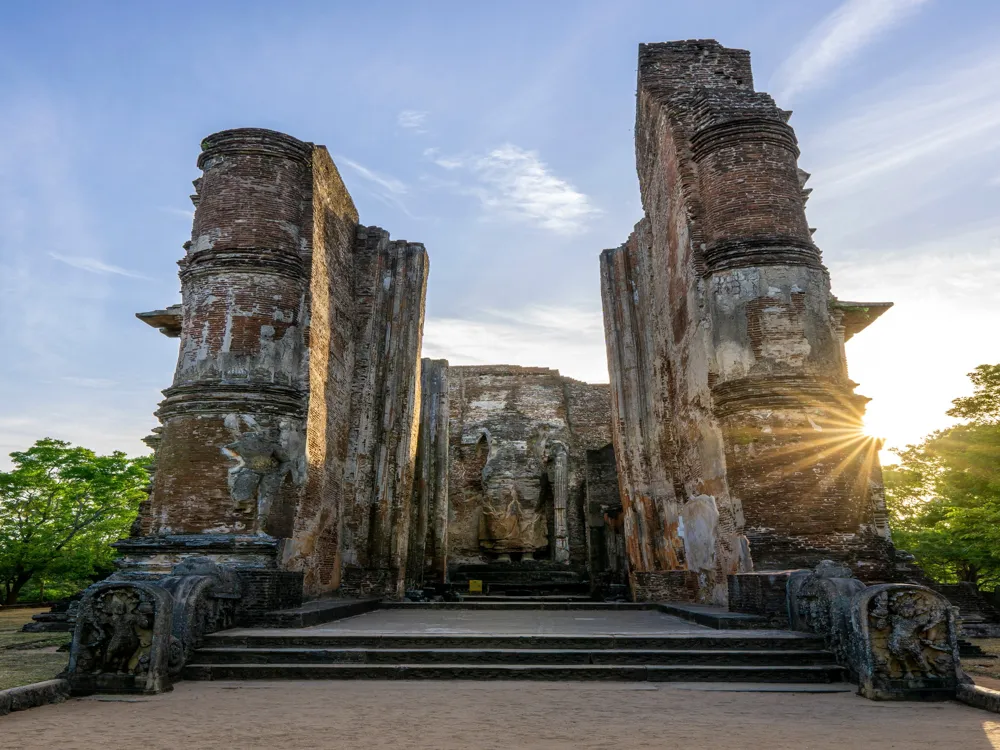
Parakrama Samudra is a water reservoir which consists of five different lakes namely Thopa, Dumbutulu, Erabadu, Boo, Katu tanks. It is also known as King Parakrama's Sea and is in Polonnaruwa in Sri Lanka. Topa Wewa is the oldest reservoir here which was built around 386 AD. The middle section has Eramudu Wewa and below you have Dubutula Wewa. The lakes here are separated by a smaller dam to reduce the pressure.
Parakrama Samudra (or the Sea of King Parakrama) is a shallow reservoir, consisting of five separate pools (Thopa, Dumbutulu, Erabadu, Boo, Katu tanks) connected by narrow channels in Polonnaruwa, Sri Lanka. It has a storage area of more than 5,000 acres for the irrigation of 18,000 acres. It is one of the most significant ancient Rainwater Reservoir of the island. In the rainy season, the rainwater reservoir is in its full splendour.It is an essential site for the Sri Lankan endemic species. Because of the 2004 Tsunami effects, many aquatic lives suffered damages, including numerous reefs due to which a step taken by the government to protect a variety of species of birds and marine beings. This humanmade lake is not only a big project that provides a method of irrigation but also serves as a home to fish and aquatic vegetation. It is a beautiful site, which gives you a burst of fresh air as you stand by it. The greenery that surrounds it adds to its beauty. You can also visit the nearby museum and hire bicycles for sightseeing.
Read More
Polonnaruwa Travel Packages
View All Travel Packages Polonnaruwa
Nearby Places Polonnaruwa
Browse Package Collections
Browse Hotel Collections



